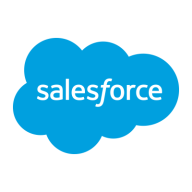

SnapLogic and MuleSoft Anypoint Platform are competitors in the iPaaS category. SnapLogic has the advantage in pricing and deployment efficiency, while MuleSoft Anypoint Platform shines with comprehensive features attractive to larger enterprises.
Features: SnapLogic offers intuitive integration capabilities, real-time data processing, and robust analytics. MuleSoft Anypoint Platform includes extensive API management, connectivity to diverse systems, and advanced security features.
Room for Improvement: SnapLogic could benefit from enhanced API management, improved scalability for larger enterprises, and more advanced security features. MuleSoft Anypoint Platform can improve its user interface for simplicity, lower its cost for small to medium-sized businesses, and streamline its deployment process to reduce complexity.
Ease of Deployment and Customer Service: SnapLogic is lauded for its quick setup and easy deployment process, coupled with excellent customer service. In contrast, MuleSoft has a steeper learning curve but offers dedicated support and comprehensive deployment options, suitable for large enterprises.
Pricing and ROI: SnapLogic provides a cost-effective setup with competitive pricing, ensuring a quicker ROI for budget-conscious businesses. Conversely, MuleSoft Anypoint Platform requires a higher initial investment, yet its robust features and scalability justify the cost for enterprises seeking extensive capabilities.
The support team is responsive and helpful.
The Salesforce team offers different levels of support.
The technical support from SnapLogic is excellent, and I would give it a complete ten.
MuleSoft Anypoint Platform is quite scalable, and it meets our use cases with no issues preventing implementation.
MuleSoft provides the ability to scale, yet it is costly to do so.
I rate the scalability of SnapLogic as eight out of ten.
I would rate the stability of SnapLogic as nearly ten out of ten.
MuleSoft is considered expensive, so pricing is a major concern.
Currently, it uses other standards, but adopting OpenAPI, the standard in the market, would be beneficial.
When dealing with multiple transactions or trading, the system can lose control, and tracking becomes hectic.
If the AI capabilities and integrations were more intuitive and easy to learn for new users, it would be greatly beneficial.
I tend to frequently communicate with SnapLogic to ask for additional features, and they have been responsive.
I do not know the specific costs, but given that it is part of MuleSoft, I suspect it is not cheap.
MuleSoft is considered one of the more expensive products in the market.
The platform reduces manual workload in maintaining infrastructure, but it does come with some cost considerations.
There would be only one point of improvement if the price could be lower.
SnapLogic is positioned at around seven or eight out of ten in terms of pricing.
The platform is integrated with Salesforce, making it preferable when using Salesforce products.
MuleSoft Anypoint Platform helps to standardize data integration approaches, making it easier to implement integration projects.
The most valuable feature is the full lifecycle management, including Anypoint Designer and Exchange, as well as Discofolio API.
I also like the whole child-parent pipeline feature; it allows me to break up a process into smaller pieces and then have one big pipeline that controls these smaller pipelines.
I find SnapLogic to be user-friendly, especially for beginners with limited experience in data engineering or ETL.


MuleSoft Anypoint Platform is used for integration and API management, connecting enterprise applications across retail, e-commerce, and supply chain. It supports cloud-to-cloud and cloud-to-on-premises scenarios with real-time and asynchronous messaging.
Users leverage MuleSoft Anypoint Platform for diverse integrations including cloud-based and on-premises, enabling data transformations, middleware functions, and hybrid integrations. It seamlessly connects systems like SAP, Salesforce, and Oracle, facilitating data transfers and integrating legacy systems. The platform offers a graphic interface, quick implementation, and a variety of connectors, contributing to its popularity for robust and scalable solutions. Despite its strengths, users seek better technical support, more connectors, simplified runtime management, and improved documentation.
What are the key features of MuleSoft Anypoint Platform?Enterprises in retail, e-commerce, and supply chain implement MuleSoft Anypoint Platform to connect various applications and systems. It supports real-time messaging for inventory management, synchronizes customer data across platforms, and integrates with legacy systems for smooth data migration. Users benefit from quick deployments and a marketplace that accelerates integration projects.
The SnapLogic Intelligent Integration Platform uses AI-powered workflows to automate all stages of IT integration projects – design, development, deployment, and maintenance – whether on-premises, in the cloud, or in hybrid environments. The platform’s easy-to-use, self-service interface enables both expert and citizen integrators to manage all application integration, data integration, API management, B2B integration, and data engineering projects on a single, scalable platform. With SnapLogic, organizations can connect all of their enterprise systems quickly and easily to automate business processes, accelerate analytics, and drive transformation.
We monitor all Integration Platform as a Service (iPaaS) reviews to prevent fraudulent reviews and keep review quality high. We do not post reviews by company employees or direct competitors. We validate each review for authenticity via cross-reference with LinkedIn, and personal follow-up with the reviewer when necessary.